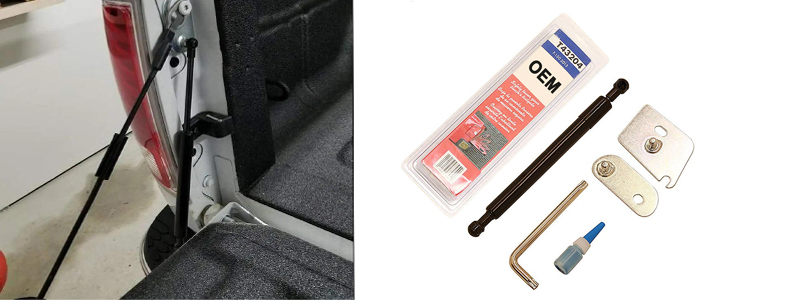Gas springs are certainly something you've used or at least heard of before. Although these springs offer a lot of force, they may malfunction, leak, or do anything else that jeopardizes the quality of your finished product or even the safety of its users.
Then, what happens? You may learn how to change your gas springs from this article.

How to Disassembly a Gas Spring
- How to remove gas springs fitted with a wire safety clip or an all-metal socket with a dark composite end fitting socket:
- The flat metal clip or wire safety clip must be released with a tiny flat-blade screwdriver. To keep the load on the current spring, open the liftgate, hatch, bonnet, hood, or windows (s). Without a second person supporting the hatch, etc., do not attempt this repair.
- The methods below should be followed if the piston-rod mounting is a composite socket:
- Place the screwdriver blade beneath the metal clip at a 45-degree angle, and gently pry to loosen the clip so that you can take the gas spring away from the ball stud that it is fastened to. Don't take the clip off completely.
- Rerun the procedure at the opposite end.
- The instructions below should be followed if the piston-rod attachment is an all-metal socket with a wire safety clip.
- Slide the screwdriver blade under the wire clip to release the clamp from the fitting's neck. Pull the wire clip out of the fitting entirely while rotating it off.
- Repeat the procedure at the opposite end.
- To maintain peak performance and avoid twisting brought on by unequal loads, always replace both gas springs.
- Because the unit's internal nitrogen gas charge is often greater than 330 Newtons, it cannot typically be compressed manually.
- Examine any fittings provided to establish whether parts need to be reused before removing old gas springs.
- While replacing the gas springs, have someone support the hatch, bonnet, boot, or rear window.
- The location of the gas spring installation must match that of the original units.
- One by one, replace the gas springs.
- Springs must always be installed with the tube raised and closed. This is essential for effective lubrication and efficient operation.
Key Considerations When Replacing Gas Spring
- To maintain peak performance and avoid twisting brought on by unequal loads, always replace both gas springs.
- Because the unit's internal nitrogen gas charge is often greater than 330 Newtons, it cannot typically be compressed manually.
- Examine any fittings provided to establish whether parts need to be reused before removing old gas springs.
- While replacing the gas springs, have someone support the hatch, bonnet, boot, or rear window.
- The location of the gas spring installation must match that of the original units.
- One by one, replace the gas springs.
- Springs must always be installed with the tube raised and closed. This is essential for effective lubrication and efficient operation.
Post time: Apr-10-2023



